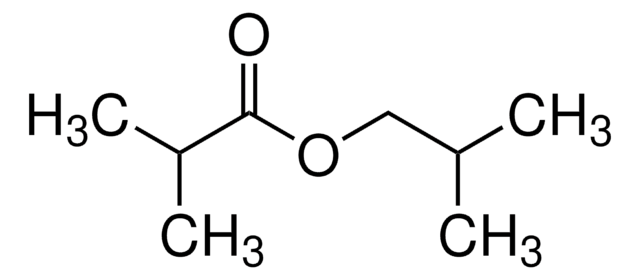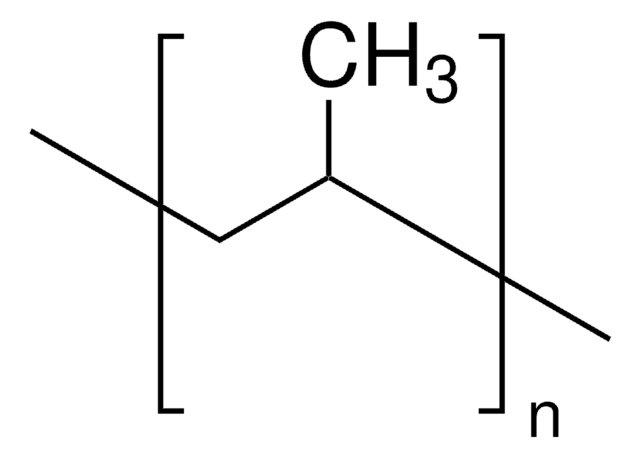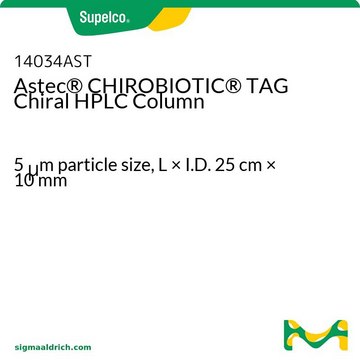53023AST
Astec® CLC-D Chiral (5 μm) HPLC Columns
L × I.D. 15 cm × 4.6 mm, HPLC Column
Sinônimo(s):
Chiral Separation CLC-D Column
About This Item
Produtos recomendados
Nome do produto
Astec® CLC-D Chiral HPLC Column, 5 μm particle size, L × I.D. 15 cm × 4.6 mm
Materiais
stainless steel column
Nível de qualidade
Agency
suitable for USP L32
linha de produto
Astec®
embalagem
pkg of 1 ea
fabricante/nome comercial
Astec®
Parâmetros
0-50 °C temperature
172 bar pressure (2500 psi)
técnica(s)
HPLC: suitable
C × D.I.
15 cm × 4.6 mm
Matriz
fully porous particle
Grupo ativo da matriz
chiral bidentate ligand (D-form), requires 5 mM CuSO4 phase
tamanho de partícula
5 μm
tamanho de poro
100 Å
pH operacional
3.5-7
técnica de separação
chiral
Descrição geral
Features:
- Separates α-hydroxy carboxylic acids, amino acids and other α-bifunctional compounds
- High selectivity with simple mobile phases
- Copper complex gives strong UV 254 nm signal
- Simple reversal of elution order, CLC-L vs. CLC-D
- Excellent reproducibility
(1) Davankov, V. A.; Rogozhin, S. V. Ligand chromatography as a novel method for the investigation of mixed complexes: Stereoselective effects in a-amino acid copper(II) complexes. J. Chrom. A. 1971, 60, 284-312.
Informações legais
Não está encontrando o produto certo?
Experimente o nosso Ferramenta de seleção de produtos.
Escolha uma das versões mais recentes:
Já possui este produto?
Encontre a documentação dos produtos que você adquiriu recentemente na biblioteca de documentos.
Protocolos
Separation of DL-Tartaric acid, ≥99%
Conteúdo relacionado
Astec CLC Copper Ligand Exchange Chiral HPLC Columns. The Astec CLC phases are based on coupling an enantiomeric form of an amine to a proprietary Astec derivative to create an appropriate distance for copper coupling.
Chromatograms
application for HPLCapplication for HPLCNossa equipe de cientistas tem experiência em todas as áreas de pesquisa, incluindo Life Sciences, ciência de materiais, síntese química, cromatografia, química analítica e muitas outras.
Entre em contato com a assistência técnica






